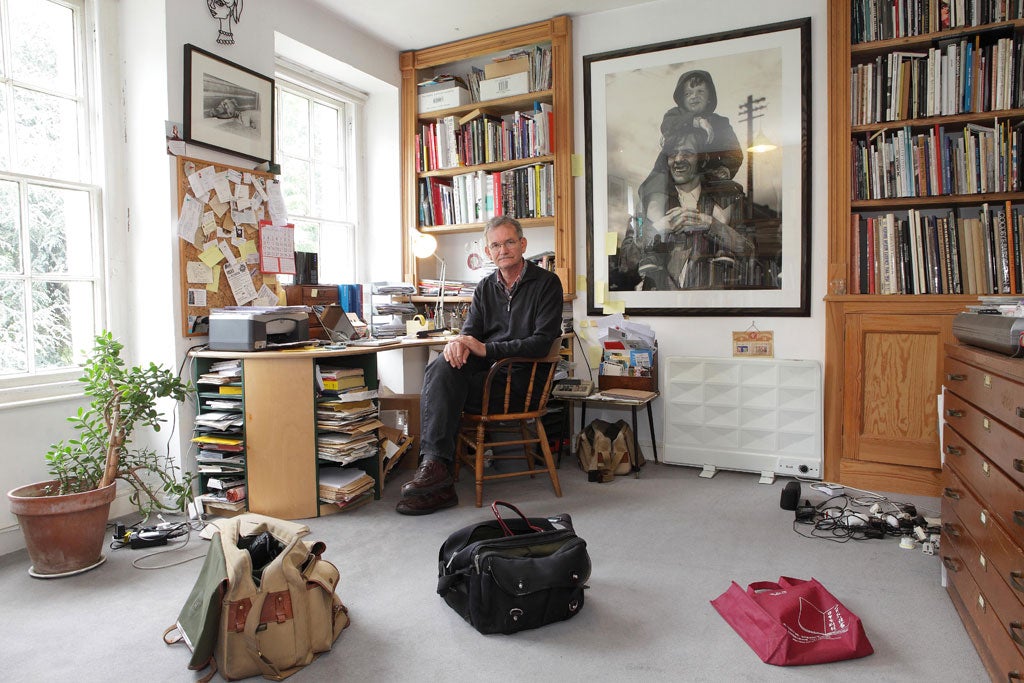In The Studio: Martin Parr, photographer
'Photography has never had a bigger audience. It's cheap and cheerful...'

Your support helps us to tell the story
From reproductive rights to climate change to Big Tech, The Independent is on the ground when the story is developing. Whether it's investigating the financials of Elon Musk's pro-Trump PAC or producing our latest documentary, 'The A Word', which shines a light on the American women fighting for reproductive rights, we know how important it is to parse out the facts from the messaging.
At such a critical moment in US history, we need reporters on the ground. Your donation allows us to keep sending journalists to speak to both sides of the story.
The Independent is trusted by Americans across the entire political spectrum. And unlike many other quality news outlets, we choose not to lock Americans out of our reporting and analysis with paywalls. We believe quality journalism should be available to everyone, paid for by those who can afford it.
Your support makes all the difference.Entering photographer Martin Parr's house in Bristol is like entering a cabinet of curiosities. I am immediately drawn to a glass display cabinet where Parr points to a group of watches bearing images of Osama bin Laden, quipping, "dictators are interesting, no?" I ask if he collects royal imagery, and he snorts, "No, it is too obvious!" When I question how his photography fits in, he says, "taking photos is a form of collecting."
Parr's photographic images are familiar, but he is not a household name. He does not have a studio – he says – he has an office in London that he rarely visits, and works mainly from this home, where he keeps some of his collections, including part of his 12,000-strong photography-book collection and prints by other photographers. Parr considers his collecting part of his work, showing it alongside his own photographs in his exhibition Parrworld.
Parr is currently working on a four-year project of the Black Country, which will culminate with a magazine, a film, an exhibition and the documentation that will be unique in Parr's unflinching honesty. He admits that he has recently filmed the Diamond Jubilee celebrations there, so it seems royalty will creep into the exhibition after all.
"The project in conjunction with Multistory is community arts at the highest level," he says, involving many subjects who will be given their own portraits at the end. "Photography has never had a bigger audience, as it is cheap and cheerful and gets the crowds in," he claims, then adds, unluckily for him, that more and more people have begun to collect both photography and photography books, driving prices up.
Parr was born in Surrey in 1952; a grandfather who was a keen amateur photographer encouraged Parr to engage in photography. He studied in Manchester, moving afterwards to Hebden Bridge, Ireland and Liverpool before settling in Bristol, where he has lived for the last 20 years. He joined the documentary photography agency Magnum in 1994.
Having turned from his gritty black-and-white images he made in Hebden Bridge and Ireland, he bravely embraced colour, publishing Last Resort in 1986, an unflinching examination of New Brighton, Liverpool's nearby and then declining seaside town. He was attacked by some critics for his scrutiny of the working classes, but looking at these works, one merely sees Parr's unflinching eye capturing the truth of a social class embracing leisure in whatever form available.
The postman arrives, bearing the latest addition to Parr's collection, a watch – "a rare thing," he says. It depicts a kiss between Yasser Arafat and Osama bin Laden. He is delighted with it, displaying at first hand the glee in what he himself calls the "gene of collecting". I leave Parrworld with his words, "You have to make sense of the world, don't you?" ringing in my ears.
Join our commenting forum
Join thought-provoking conversations, follow other Independent readers and see their replies
Comments